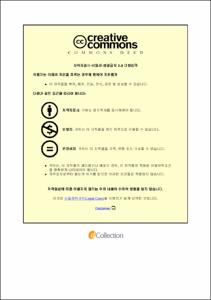Fish Market Segmentation for Tunisia
- Alternative Title
- 튀니지 생선 시장 분할
- Abstract
- The average Fish consumption in Tunisia increased by around 47% in ten years growing from 5.8 to 11kg / person / year between 1995 and 2014 (INS). However, this consumption is characterized by a sharp disparity between coastal and continental regions. This disparity is due to several factors such as availability and supply of fish, the difference between consumption patterns and product quality and it's only a statistical average that does not reflect the actual distribution of fish consumption, indeed concentrated, taking into account the great role played by tourism and catering, and the high cost of fish in the local market which makes them less accessible to the average grants and low-income families.
Fish is a highly perishable product and its quality is an important factor. The quality attributes are perceived differently by consumers: the expected quality, the experience quality or the quality of belief. This paper examines consumer perception of Tunisian quality fish, taking into account the various attributes and aims to segment Tunisian fish consumers based on their motives, perceived barriers, and their risk perception corresponding with fish consumption.
A survey was conducted on a sample of 347 consumers from the regions of Tunis, Ben Arous, Mannouba and Ariana. The data collected were analysed by a factor analysis. Three dimensions were identified: “Motives to eat fish,” “Risk perception” and “Perceived difficulties in preparing fish dishes”. These dimensions allowed identifying three types of consumers. These clusters were characterized by socio-demographic and economic variables and their consumption preferences. Profiling the clusters yields opportunities for targeted marketing strategies and product orientation.
- Issued Date
- 2016
- Awarded Date
- 2016. 2
- Type
- Dissertation
- Publisher
- 부경대학교 글로벌수산대학원
- Affiliation
- 부경대학교 글로벌수산대학원
- Department
- 글로벌수산대학원 국제수산과학협동과정
- Advisor
- 장영수
- Table Of Contents
- Tables of contents i
List of Figures iii
List of Tables iv
Abstract v
Introduction 1
Literature and Review 5
Research Model and Method 11
The conceptual model 11
Empirical Process 13
Survey design and measurement procedure 14
Segmentation Variables 16
Segment Profiling Variables 19
Analyses Procedures 22
Exploratory factor analysis and test of reliability 23
Cluster analysis 25
Analysis and Results 28
Simple size and characteristics 29
Exploratory factor for segmentation variables 32
Descriptive statistics of segmentation variables 38
Clustering 42
Testing the cluster solution 45
Profiling the segments 48
Fish consumption behaviour 49
Attitude 51
Life style orientation 54
Sociodemographics 56
Conclusion 59
References 66
Appendix 71
Acknowledgement 80
- Degree
- Master
- Appears in Collections:
- 글로벌수산대학원 > 국제수산과학협동과정
- Files in This Item:
-
-
Download
 Fish Market Segmentation for Tunisia.pdf
기타 데이터 / 935 kB / Adobe PDF
Fish Market Segmentation for Tunisia.pdf
기타 데이터 / 935 kB / Adobe PDF
-
Items in Repository are protected by copyright, with all rights reserved, unless otherwise indicated.